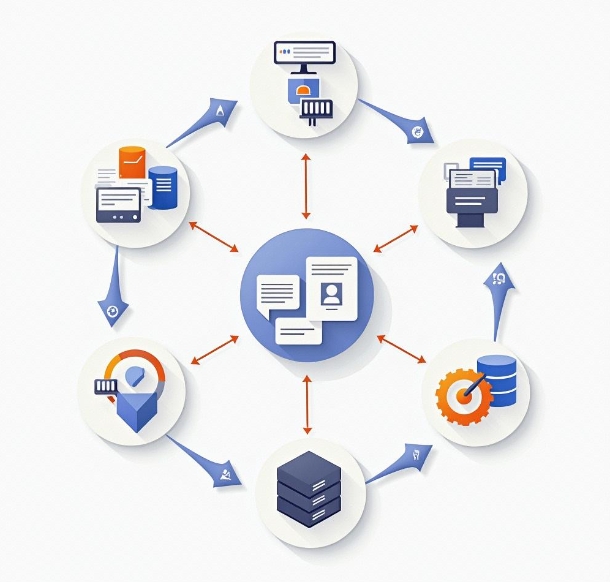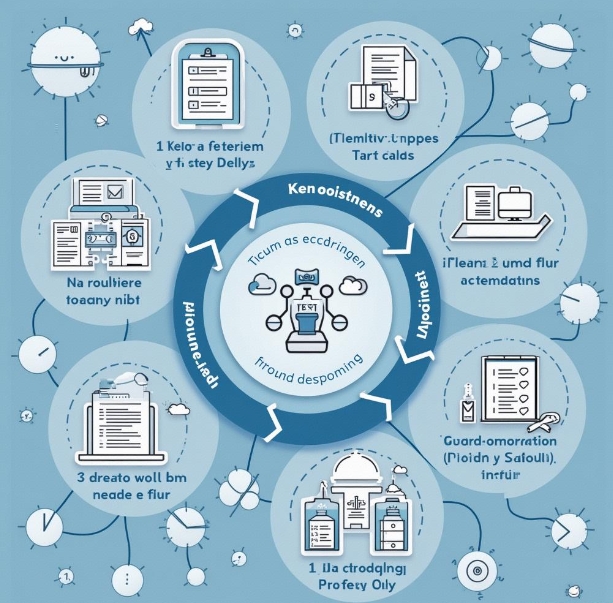Custom AI Software: Key Technologies for Building Exclusive Intelligent Solutions
- latest articles
- 1.DApp Development & Customization: Merging Diverse Market Needs with User Experience 2.Analysis of the Core Technical System in DApp Project Development 3.How to achieve cross-chain interoperability in Web3 projects? 4.How does the tokenization of points reconstruct the e-commerce ecosystem? 5.How to Set and Track Data Metrics for a Points Mall? 6.What is DApp Development? Core Concepts and Technical Analysis 7.Inventory of commonly used Web3 development tools and usage tips 8.Development of a Distribution System Integrated with Social E-commerce 9.Six Key Steps for Businesses to Build a Points Mall System 10.What is DApp Development? A Comprehensive Guide from Concept to Implementation
- Popular Articles
- 1.Future Trends and Technology Predictions for APP Development in 2025 2.Analysis of the DeFi Ecosystem: How Developers Can Participate in Decentralized Finance Innovation 3.From Zero to One: How PI Mall Revolutionizes the Traditional E-commerce Model 4.DAPP Development | Best Practices for Professional Customization and Rapid Launch 5.Recommended by the Web3 developer community: the most noteworthy forums and resources 6.How to Develop a Successful Douyin Mini Program: Technical Architecture and Best Practices 7.From Cloud Computing to Computing Power Leasing: Building a Flexible and Scalable Computing Resource Platform 8.Shared Bike System APP: The Convenient Choice in the Era of Smart Travel 9.How to Create a Successful Dating App: From Needs Analysis to User Experience Design 10.From Design to Development: The Complete Process of Bringing an APP Idea to Life
With the rapid development of Artificial Intelligence (AI), its applications have permeated various industries, ranging from intelligent customer service to precision medicine, and from industrial automation to personalized marketing. However, the needs of different industries and enterprises vary, making general-purpose AI systems often inadequate for specific scenarios. Customized AI software has thus become a crucial choice for many enterprises aiming to achieve digital transformation and intelligent upgrades.
In this article, we will explore the key technologies of AI software customization, helping businesses understand how to build their own intelligent solutions starting from general technologies.
I. The Significance of AI Software Customization
The potential of AI lies in its ability to help businesses free up labor, optimize processes, and enhance efficiency. However, achieving this effectiveness often relies on solutions that deeply align with business scenarios. For instance, the retail industry requires more efficient customer recommendation algorithms, while the healthcare sector needs precise diagnostic models. Relying solely on off-the-shelf AI tools often fails to fully meet business needs.
Customized AI software offers several significant advantages:
1. Alignment with Industry Characteristics: Different fields have vastly different requirements for AI functionalities. Customized software can deeply integrate industry knowledge, making algorithms more targeted.
2. Enhanced Competitiveness: With unique AI functionalities, enterprises can gain a technological edge in the market.
3. Improved Control: Custom solutions can avoid over-reliance on third-party tools, ensuring data security and business continuity.
4. Cost Optimization: Although the initial investment in customized development is higher, it effectively reduces long-term maintenance and adjustment costs.
II. Core Technologies of AI Software Customization
1. Data Collection and Preprocessing
The foundation of customized AI solutions is data, particularly high-quality, structured data. Enterprises need to define clear objectives during the initial software development phase and collect data closely related to business needs. This data may come from various sources: sensors, transaction records, user behavior logs, social media, etc.
After data collection, preprocessing is a critical step to ensure model reliability. Steps such as data cleaning, normalization, and handling missing values can improve model training effectiveness. Additionally, feature engineering plays a vital role—by uncovering hidden key information in the data, models can predict or classify more accurately.
2. Model Design and Training
In AI customization, selecting the appropriate model is crucial. Common AI models include machine learning algorithms (such as Random Forest, Support Vector Machines) and deep learning algorithms (such as Convolutional Neural Networks, Recurrent Neural Networks). Different strategies are required for various business needs:
Classification Tasks: Suitable for tasks like email classification and image recognition, typically using Support Vector Machines or Deep Neural Networks.
Prediction Tasks: Used for sales forecasting, user behavior prediction, etc., recommending time series analysis and regression models.
Generation Tasks: Such as natural language generation and image generation, commonly using Generative Adversarial Networks (GAN) or Variational Autoencoders (VAE).
When training models, it is essential to select efficient optimization algorithms (such as Adam or SGD) and set hyperparameters appropriately. Moreover, the model training process requires evaluation through cross-validation and test sets to ensure its stability and generalization capability in practical applications.
3. Human-Computer Interaction Interface Design
The ultimate goal of AI is to serve users. Therefore, a user-friendly human-computer interaction interface is crucial when developing AI software.
Natural Language Processing (NLP): Provides users with functions like speech recognition and intelligent Q&A. Current mainstream language models like GPT support fluent text generation and understanding.
Graphical User Interface (GUI): Displays analysis results through intuitive interfaces, such as dashboards and data visualization charts.
A good interaction interface can significantly reduce the user learning curve and enhance the user experience.
4. Deployment and Optimization
Developing an AI model is only the first step; its deployment and optimization are vital parts of the software's entire lifecycle.
Edge Computing: In IoT applications, edge computing technology can reduce data transmission latency and improve system response speed.
Cloud Computing: Deploying AI solutions via cloud platforms enables large-scale distributed computing to meet high concurrency demands.
Continuous Optimization: Based on actual usage feedback, continuously adjust model parameters and update algorithms to enhance performance.
III. Challenges and Solutions in the Customization Process
1. Data Privacy and Security
During the customization process, enterprises often need to handle sensitive data. Protecting data privacy while implementing AI functionalities is a key challenge.
Solution: Adopt federated learning technology, allowing models to be trained on local devices without uploading data to servers.
2. Long Development Cycle
Compared to general software, customized AI development has a longer cycle.
Solution: Use modular development and agile methodologies to break the project into multiple iterative phases for rapid feature deployment.
3. High Technical Barriers
The complexity of AI technology requires development teams to possess extensive experience and multidisciplinary knowledge.
Solution: Leverage open-source frameworks (such as TensorFlow, PyTorch) and existing models to reduce development difficulty.
IV. Application Scenarios of AI Software Customization
The following are several typical application areas for customized AI solutions:
1. Smart Manufacturing
Through customized machine learning algorithms, factories can achieve predictive maintenance of equipment, optimize production processes, and conduct product quality inspections.
2. Personalized Marketing
In e-commerce and advertising, customized AI software can analyze user preferences to provide precise recommendation services, thereby increasing conversion rates.
3. Healthcare
Customized AI software shows great potential in medical image analysis and personalized treatment planning. For example, deep learning-based image analysis systems can assist doctors in diagnosing diseases more quickly.
V. Future Trends and Outlook
With the continuous development of AI technology, customized software will exhibit the following trends:
Greater Versatility: Through modular design, AI software can more easily adapt to different scenarios.
Higher Intelligence: Models will increasingly resemble human reasoning and decision-making capabilities.
More Personalization: In the future, AI solutions may dynamically adjust based on real-time user needs, truly achieving "personalization for everyone."
The development of customized AI software will drive various industries toward an intelligent and digital future.
Conclusion
AI software customization is not just a technical task but also a strategic choice. By deeply integrating AI technology with business needs, enterprises can achieve efficient innovation and seize market opportunities. Facing challenges, businesses must focus on data quality, team capabilities, and continuous optimization to find their place in the complex technological ecosystem.
-

How does artificial intelligence technology transform the operational models of modern enterprises?
In the wave of the digital era, artificial intelligence (AI) technology has tran···
-

How to Utilize Artificial Intelligence for Precision Medicine and Health Management
With the rapid advancement of technology, artificial intelligence (AI) has demon···
-

Integration and Application of Artificial Intelligence and Robotics
In today's era of rapid technological advancement, the integration of artificial···

 Blockchain
Blockchain












